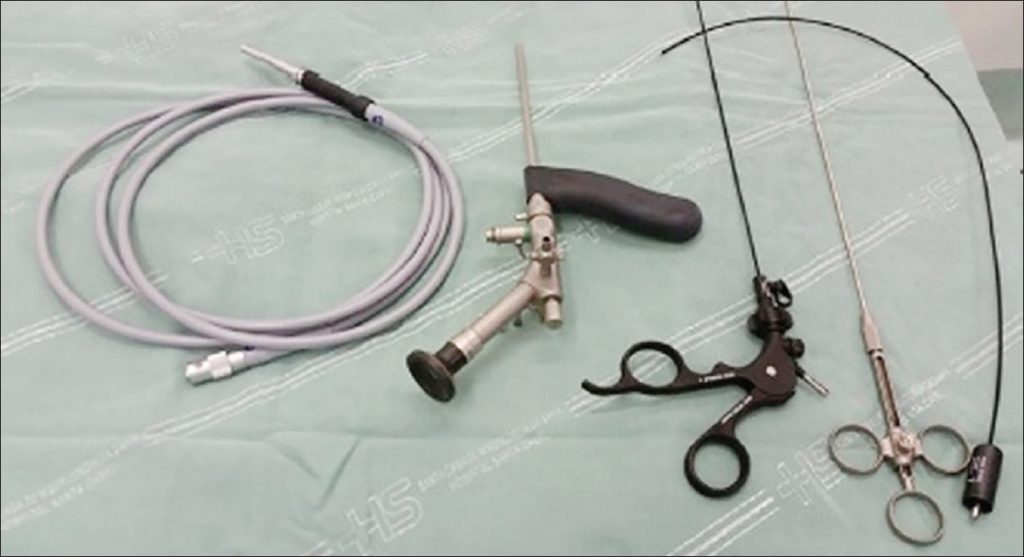Pilonidal cyst surgery with the EPSiT endoscopic technique
A pilonidal cyst is a chronic condition of inflammatory etiology that is located in the skin of the coccyx area, in the intergluteal cleft. This condition usually develops due to ingrown hairs in the area between the buttocks and occurs more often in the male population. It is more common for men to develop a pilonidal cyst during puberty, when excess hormone secretion triggers hair growth, but also in their third decade of life. This particular disease is treated in the majority of cases with surgery. Now, newer, less invasive techniques have been developed to treat it, such as the EPSiT endoscopic technique.
When the pilonidal cyst becomes infected, an inflamed abscess forms. As a result, redness and pain appear in the area, while at the same time purulent fluid flows out. The patient may also experience fever and nausea. When the cyst acquires a chronic form, then the specific abscess favors the creation of a fistula, called a capillary fistula. This fistula is a communication channel between the abscess and the skin near or above the cyst. To treat this specific painful condition, the EPSiT endoscopic technique offers excellent results.

EPSiT endoscopic technique: Surgical Process
The EPSiT endoscopic technique is performed using a syringoscope, a tool that the General Surgeons in Athens insert into the bladder area. This special tool has a tiny camera built into its tip, which transfers the magnified image of the inside of the cyst to a high definition 3D screen. In this way, the affected area is mapped in detail and the contents of the cyst as well as the pathological tissues around it are thoroughly investigated.
Then, the hairs that have penetrated under the skin are removed, while the follicular fistula is cauterized. In order to make this possible, surgical lasers and radio frequencies (RF) of exceptional efficiency and power are used, which cauterize the affected area, eliminating the possibility of recurrence of the condition in the future. The use of the therapeutic-surgical Laser or radio frequencies (RF) gives the surgeon the ability to effectively remove the pathological tissue, causing thermal destruction of the epithelium through diathermy. The cauterization that takes place at the same time seals the blood vessels, preventing the occurrence of bleeding both during surgery and postoperatively.
What are the benefits of the particular endoscopic technique?
The EPSiT endoscopic technique allows thorough cleaning of the inside of the cyst from hair and hair follicle remnants, minimizing the possibility of recurrence of the condition in the future. The use of the screen that provides a magnified and high-definition image of the inside of the cyst significantly helps to completely sublimate the pathological tissue and remove all hairs. Consequently, effective and permanent treatment of the condition is granted.
The classic surgical methods to treat the condition involve excision of the cyst, while the wound is then either left open to heal on its own or closed with stitches. However, this particular surgical option is accompanied by severe postoperative pain and the need for frequent monitoring of the patient by the attending physician. At the same time, the scar of the incision is visible, which does not offer a satisfactory aesthetic result. The solution to this issue is provided by the EPSiT endoscopic technique for the treatment of the pilonidal cyst, as it offers significant postoperative benefits.
The use of laser or radio frequencies in this particular technique makes it a completely bloodless and painless option. At the same time, its implementation with the administration of local anesthesia significantly facilitates the patient. The EPSiT endoscopic technique does not require incisions, so it offers excellent aesthetic results, while the patient does not undergo gauze changes or other post-operative recovery procedures. Finally, both recovery time and postoperative pain are almost non-existent, as the patient is immediately mobilized and discharged on the same day, while he can immediately return to his daily activities.

